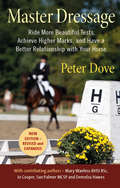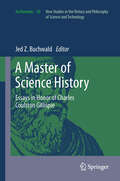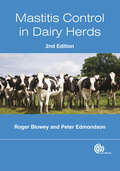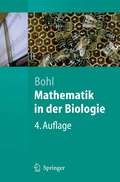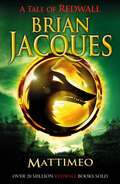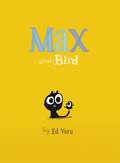- Table View
- List View
Mask of Tlaloc (UEB contracted)
by RnibThis striking mask is in the form of two entwined serpents, one green and one blue, and is believed to represent Quetzalcoatl (the feathered serpent) or the rain god Tlaloc. Both deities are associated with serpents. The priest that served Tlaloc in the Great Temple may have worn such a mask during rituals. The mask is 18.2 cm high by 16.5 cm wide and 12.5 cm deep. The mask is carved from a single piece of wood (Cedrela odorata) with circular holes for the eyes and a slit for the mouth that would have been surrounded by teeth made from white conch shell although only four teeth now remain. The front of the mask is covered with a mosaic of different sized polished fragments of irregular shaped turquoise, now damaged in places. The turquoise recalls luxuriant green foliage and life-giving water. Mosaic feathers flank the face and may have been part of a larger head ornament composed of quetzal-bird feathers. The two serpents encircle the eyes and are entwined over the nose and around the mouth. The serpent tails finish at the temples with rattles that are moulded in relief and were originally gilded. The serpent heads protrude under the lower jaw. There are two tactile images of the mask - a front view and a side view. Both have been created at the same scale so that they can be compared and follow the lines and shapes as closely as possible. Each tactile image has a key at the top of the page and is approximately the same size as the actual object. The shape of the serpents and outline of the mosaic feathers are shown as thick lines infilled with the relevant texture shown in the keys. The rattles and teeth are shown as solid shapes with no texture for the eye holes and slit mouth.
Mason's World Dictionary of Livestock Breeds, Types and Varieties
by Valerie PorterMason's World Dictionary of Livestock Breeds, Types and Varieties, now in its sixth edition, has a long history as a reliable and authoritative source of key livestock breed information. Intended as a list of livestock names and synonyms for breeds, groups, types and varieties worldwide, the dictionary aims to include all names found in the literature, 'defining' each breed or type with a brief indication of identifying characteristics, uses and source of origin. Expanded into a new edition, this established and trusted resource: Extends coverage to include yak and camelids in addition to the existing cattle, sheep, pigs, goats, horses, asses and water buffalo.Features well over 10,000 entries and cross-references on breeds, sub-breeds, types, varieties, strains and lines of species.Covers newly created and now-recognised local breeds documented over the past two decades. An important updated work, Mason's Dictionary forms a useful reference for livestock breeders and academics interested in breeds, as well as national and international organizations with interests in livestock.
Mass Spectrometry and Genomic Analysis (Focus on Structural Biology #2)
by J. N. Housby76 2. Short Oligonucleotide Mass Analysis 76 2. 1. Method Outline 76 2. 2. Design of PCR Primers and Fragments for Analysis 78 2. 3. Typical PCR Reaction Conditions 79 3. Electrospray Ionisation Mass Spectrometry 79 Formation of Ions 3. 1. 79 3. 2. Tandem Mass Spectrometry 79 3. 3. Typical ESI-MS Settings for SOMA 80 4. Purification Procedures 80 4. 1. Phenol/Chloroform Extraction and Ethanol Precipitation 80 4. 2. In-line HPLC Purification 81 5. Genotyping Using SOMA 81 5. 1. APC Genotyping in Human Subjects 81 5. 2. APC Genotyping in Min Mice 85 5. Mutation Detection Using SOMA 86 6. 1. Analysis of p53 Mutations in Liver Cancer Patients 86 6. 1. 1. p53 Mutations in Liver Tumours 87 6. 1. 2. p53 Mutations in Plasma Samples 88 7. Advantages and Disadvantages of SOMA 89 8. Future Perspectives 90 9. Acknowledgements 91 10. References 91 CHAPTER 7 WV. Bienvenut, M. Müller, PM. Palagi, E. Gasteiger, M. Heller, E. Jung, M. Giron, R. Gras, S. Gay, PA. Binz, G J. Hughes, JC. Sanchez, RD. Appel, DF. Hochstrasser Proteomics and Mass Spectrometry: Some Aspects and Recent Developments 1. Introduction to Proteomics 93 2. Protein Biochemical and Chemical Processing Followed by Mass Spectrometric Analysis 94 2. 1. 2-DE Gel Protein Separation 95 Protein Identification Using Peptide Mass Fingerprinting and Robots 96 2. 2. 2. 2. 1. MALDI-MS Analysis 98 2. 2. 2. MS/MS Analysis 102 Improvement of the Identification by Chemical Modification of Peptides 106 2. 2. 3.
MASSAGE FOR HORSES (Massage For Horses Ser. #38)
by MARY BROMLEYThis handbook demonstrates how to apply massage techniques to enhance your horse's performance, health and well-being. It discusses the circulatory and lymphatic systems, different techniques, such as effleurage and petrissage, massages for different activities, and hand-strengthening exercises.
Master Dressage: Ride more beautiful tests, achieve higher marks and have a better relationship with your horse
by PETER DOVEA NEW Edition Revised and Expanded based on the top 25 bestselling book on Amazon which now includes chapters on ground work and rider fitness. Completely revised including new colour photographs and diagrams. Approaching Dressage from a newcomer’s perspective can be a little daunting, so follow our 5 Step System and you can start mastering dressage from day one. Learn how to: RIDE more accurate tests. The chapter on accuracy covers how to ride all of the main shapes with greater balance and accuracy. Stop throwing away marks due to inaccurate shapes which make the job of your horse more difficult that it needs to be. Improve your FLUIDITY: Improve the appearance of the suppleness of your horse. Learn how to prepare your horse for each movement correctly and produce a beautiful looking test. Increase your dressage UNDERSTANDING: Understand the purpose of the movements in a dressage test, learn what the judge wants to see and what each movement is meant to demonstrate to the judge. Avoid typical rider traps, and bust some of the typical dressage myths. Your horse will thank you for it. Learn what to PRACTICE and in what order: Have you ever entered the arena to school your horse and not known what to do? Have you ever hit a major problem teaching your horse something? This section not only tells you what you should be practicing, but how to go about it, and what you should do when you get into trouble. Learn how to properly REVIEW your progress: Learn to review your progress using different tools, how to understand judge s comments and how to change your practice to improve. Guest chapters from Mary Wanless BHSI BSc, Jo Cooper, Sue Palmer MCSP and Demelza Hawes
A Master of Science History: Essays in Honor of Charles Coulston Gillispie (Archimedes #30)
by Jed Z. BuchwaldNew essays in science history ranging across the entire field and related in most instance to the works of Charles Gillispie, one of the field's founders.
Mastitis Control in Dairy Herds
by Roger Blowey Peter EdmondsonMastitis in dairy herds is a worldwide problem, with significant implications for milk yields and quality, economic losses, and animal health and welfare. Effective control makes a considerable difference to the farmer and the animal, and this new edition includes updated information throughout as well as new chapters covering organic dairy herds, dry period infections, robotic milking, residue avoidance, and best practice procedures. The authors, both fellows of the Royal College of Veterinary Surgeons and recognised experts in the field, provide basic principles relevant to farmers, vets and veterinary students in a clear and practical way, covering anatomy, epidemiology, milking machines, disinfection, somatic cell counts, and diseases of the udders and teats in order to provide a thorough understanding of the causes of mastitis and measures of control and prevention. It is an indispensable resource for large animal vets, dairy industry personnel, farm managers, dairy herdsmen, and researchers and students in animal sciences and related disciplines.
Maternal Effects As Adaptations
by Timothy A. Mousseau Charles W. FoxMothers have the ability to profoundly affect the quality of their offspring--from the size and quality of their eggs to where, when, and how eggs and young are placed, and from providing for and protecting developing young to choosing a mate. In many instances, these maternal effects may be the single most important contributor to variation in offspring fitness. This book explores the wide variety of maternal effects that have evolved in plants and animals as mechanisms of adaptation to temporally and spatially heterogeneous environments. Topics range from the evolutionary implications of maternal effects to the assessment and measurement of maternal effects. Four detailed case studies are also included. This book represents the first synthesis of the current state of knowledge concerning the evolution of maternal effects and their adaptive significance.
Maternal Effects in Mammals
by Dario Maestripieri Jill M. MateoEvolutionary maternal effects occur whenever a mother’s phenotypic traits directly affect her offspring’s phenotype, independent of the offspring’s genotype. Some of the phenotypic traits that result in maternal effects have a genetic basis, whereas others are environmentally determined. For example, the size of a litter produced by a mammalian mother—a trait with a strong genetic basis—can affect the growth rate of her offspring, while a mother’s dominance rank—an environmentally determined trait—can affect the dominance rank of her offspring. The first volume published on the subject in more than a decade, Maternal Effects in Mammals reflects advances in genomic, ecological, and behavioral research, as well new understandings of the evolutionary interplay between mothers and their offspring. Dario Maestripieri and Jill M. Mateo bring together a learned group of contributors to synthesize the vast literature on a range of species, highlight evolutionary processes that were previously overlooked, and propose new avenues of research. Maternal Effects in Mammals will serve as the most comprehensive compendium on and stimulus for interdisciplinary treatments of mammalian maternal effects.
Maternal Effects in Mammals
by Dario Maestripieri Jill M. MateoEvolutionary maternal effects occur whenever a mother’s phenotypic traits directly affect her offspring’s phenotype, independent of the offspring’s genotype. Some of the phenotypic traits that result in maternal effects have a genetic basis, whereas others are environmentally determined. For example, the size of a litter produced by a mammalian mother—a trait with a strong genetic basis—can affect the growth rate of her offspring, while a mother’s dominance rank—an environmentally determined trait—can affect the dominance rank of her offspring. The first volume published on the subject in more than a decade, Maternal Effects in Mammals reflects advances in genomic, ecological, and behavioral research, as well new understandings of the evolutionary interplay between mothers and their offspring. Dario Maestripieri and Jill M. Mateo bring together a learned group of contributors to synthesize the vast literature on a range of species, highlight evolutionary processes that were previously overlooked, and propose new avenues of research. Maternal Effects in Mammals will serve as the most comprehensive compendium on and stimulus for interdisciplinary treatments of mammalian maternal effects.
Maternal Effects in Mammals
by Dario Maestripieri Jill M. MateoEvolutionary maternal effects occur whenever a mother’s phenotypic traits directly affect her offspring’s phenotype, independent of the offspring’s genotype. Some of the phenotypic traits that result in maternal effects have a genetic basis, whereas others are environmentally determined. For example, the size of a litter produced by a mammalian mother—a trait with a strong genetic basis—can affect the growth rate of her offspring, while a mother’s dominance rank—an environmentally determined trait—can affect the dominance rank of her offspring. The first volume published on the subject in more than a decade, Maternal Effects in Mammals reflects advances in genomic, ecological, and behavioral research, as well new understandings of the evolutionary interplay between mothers and their offspring. Dario Maestripieri and Jill M. Mateo bring together a learned group of contributors to synthesize the vast literature on a range of species, highlight evolutionary processes that were previously overlooked, and propose new avenues of research. Maternal Effects in Mammals will serve as the most comprehensive compendium on and stimulus for interdisciplinary treatments of mammalian maternal effects.
Mathematical Approaches to Problems in Resource Management and Epidemiology: Proceedings of a Conference held at Ithaca, NY, Oct. 28–30, 1987 (Lecture Notes in Biomathematics #81)
by Carlos Castillo-Chavez Simon A. Levin Christine A. ShoemakerIncreasingly, mathematical methods are being used to advantage in addressing the problems facing humanity in managing its environment. Problems in resource management and epidemiology especially have demonstrated the utility of quantitative modeling. To explore these approaches, the Center of Applied Mathematics at Cornell University organized a conference in Fall, 1987, with the objective of surveying and assessing the state of the art. This volume records the proceedings of that conference. Underlying virtually all of these studies are models of population growth, from individual cells to large vertebrates. Cell population growth presents the simplest of systems for study, and is of fundamental importance in its own right for a variety of medical and environmental applications. In Part I of this volume, Michael Shuler describes computer models of individual cells and cell populations, and Frank Hoppensteadt discusses the synchronization of bacterial culture growth. Together, these provide a valuable introduction to mathematical cell biology.
Mathematical Ecology of Populations and Ecosystems
by John PastorPopulation ecologists study how births and deaths affect the dynamics of populations and communities, while ecosystem ecologists study how species control the flux of energy and materials through food webs and ecosystems. Although all these processes occur simultaneously in nature, the mathematical frameworks bridging the two disciplines have developed independently. Consequently, this independent development of theory has impeded the cross-fertilization of population and ecosystem ecology. Using recent developments from dynamical systems theory, this advanced undergraduate/graduate level textbook shows how to bridge the two disciplines seamlessly. The book shows how bifurcations between the solutions of models can help understand regime shifts in natural populations and ecosystems once thresholds in rates of births, deaths, consumption, competition, nutrient inputs, and decay are crossed. Mathematical Ecology is essential reading for students of ecology who have had a first course in calculus and linear algebra or students in mathematics wishing to learn how dynamical systems theory can be applied to ecological problems.
Mathematical Foundations of Neuroscience (Interdisciplinary Applied Mathematics #35)
by David H. Terman G. Bard ErmentroutThis book applies methods from nonlinear dynamics to problems in neuroscience. It uses modern mathematical approaches to understand patterns of neuronal activity seen in experiments and models of neuronal behavior. The intended audience is researchers interested in applying mathematics to important problems in neuroscience, and neuroscientists who would like to understand how to create models, as well as the mathematical and computational methods for analyzing them. The authors take a very broad approach and use many different methods to solve and understand complex models of neurons and circuits. They explain and combine numerical, analytical, dynamical systems and perturbation methods to produce a modern approach to the types of model equations that arise in neuroscience. There are extensive chapters on the role of noise, multiple time scales and spatial interactions in generating complex activity patterns found in experiments. The early chapters require little more than basic calculus and some elementary differential equations and can form the core of a computational neuroscience course. Later chapters can be used as a basis for a graduate class and as a source for current research in mathematical neuroscience. The book contains a large number of illustrations, chapter summaries and hundreds of exercises which are motivated by issues that arise in biology, and involve both computation and analysis. Bard Ermentrout is Professor of Computational Biology and Professor of Mathematics at the University of Pittsburgh. David Terman is Professor of Mathematics at the Ohio State University.
Mathematical Modeling in Microbial Ecology (Chapman & Hall Microbiology Series)
by A.L. Koch Joseph A. Robinson George A. MillikenFrom the Chapman & Hall Microbiology Series this unique resource offers specific experimental and practical applications of mathematical modeling in microbial ecology. The text presents a variety of systems, ranging from subcellular systems to ecosystems, and shows how to test whether the models provide a good representation of the system. The book also encourages further development and application of modeling to burgeoning problems associated with microbial ecology, such as the pollution and destruction of pesticides and herbicides.
Mathematical Modelling and Analysis of Infectious Diseases (Studies in Systems, Decision and Control #302)
by Khalid Hattaf Hemen DuttaThis book discusses significant research and study topics related to mathematical modelling and analysis of infectious diseases. It includes several models and modelling approaches with different aims, such as identifying and analysing causes of occurrence and re-occurrence, causes of spreading, treatments and control strategies. A valuable resource for researchers, students, educators, scientists, professionals and practitioners interested in gaining insights into various aspects of infectious diseases using mathematical modelling and mathematical analysis, the book will also appeal to general readers wanting to understand the dynamics of various diseases and related issues. Key FeaturesMathematical models that describe population prevalence or incidence of infectious diseasesMathematical tools and techniques to analyse data on the incidence of infectious diseasesEarly detection and risk estimate models of infectious diseasesMathematical models that describe the transmission of infectious diseases and analyse dataDynamical analysis and control strategies for infectious diseasesStudies comparing the utility of particular models in describing infected diseases-related issues such as social, health and economic
Mathematical Morphology and Its Application to Signal and Image Processing: 9th International Symposium on Mathematical Morphology, ISMM 2009 Groningen, The Netherlands, August 24-27, 2009 Proceedings (Lecture Notes in Computer Science #5720)
by Michael H. F. Wilkinson Jos B. T. M. RoerdinkThe 9th ISMM conference covered a very diverse collection of papers, bound together by the central themes of mathematical morphology, namely, the tre- ment of images in terms of set and lattice theory. Notwithstanding this central theme, this ISMM showed increasing interaction with other ?elds of image and signal processing, and several hybrid methods were presented, which combine the strengths of traditional morphological methods with those of, for example, linear ?ltering.This trendis particularlystrong in the emerging?eld of adaptive morphological ?ltering, where the local shape of structuring elements is det- mined by non-morphological techniques. This builds on previous developments of PDE-based methods in morphology and amoebas. In segmentation we see similar advancements, in the development of morphological active contours. Even within morphology itself, diversi?cation is great, and many new areas of research are being opened up. In particular, morphology of graph-based and complex-based image representations are being explored. Likewise, in the we- established area of connected ?ltering we ?nd new theory and new algorithms, but also expansion into the direction of hyperconnected ?lters. New advances in morphological machine learning, multi-valued and fuzzy morphology are also presented. Notwithstanding the often highly theoretical reputation of mathematical morphology, practitioners in this ?eld have always had an eye for the practical.
Mathematik in der Biologie (Springer-Lehrbuch)
by Erich BohlWas jeder Biologiestudent über Mathematik wissen sollte... Erich Bohl findet über biologische Fragestellungen einen natürlichen Einstieg in die mathematischen Themen. Er beschränkt sich dabei auf die für Biologen wichtigen mathematischen Grundlagen. Für den Leser reicht Schulmathematik als Voraussetzung zum Verständnis aus. Eine Einführung zu jedem Kapitel erleichtert zusätzlich das Verständnis des Textes. Die Neuauflage enthält jetzt auch ein Kapitel zur linearen Algebra. Sie haben Gelegenheit, Ihr neues Wissen gleich durch Übungsaufgaben mit Lösungen zu erproben. ... nicht mehr und nicht weniger steht in diesem Buch - kurz, knapp und umfassend.
Mathematik in der Biologie (Springer-Lehrbuch)
by Erich BohlDer Autor steigt über biologische Fragestellungen in die Mathematik ein und stellt kurz, knapp und dennoch umfassend die mathematischen Grundlagen dar, die für Biologen relevant sind. Zu Beginn jedes Kapitels wird anhand einfacher Beispiele erläutert, wie ein mathematisches Modell überhaupt entsteht. Der Stoff ist so aufbereitet, dass die Schulmathematik als Voraussetzung ausreicht. Das neu angeeignete Wissen kann anhand von Übungsaufgaben (mit Lösungen) erprobt werden.
Matilda Fluffywing Helps Out: Book 16 (Magic Animal Friends)
by Daisy MeadowsWelcome to a magical world where animals talk and play - just like you and me!Nasty witch Grizelda has used her horrid magic on the Kindness Tree and now all the animals in Friendship Forest are being mean! Can Lily, Jess and baby owl Matilda Fluffywing break Grizelda's spell and save the Heart Trees before it's too late?
Mattimeo (Redwall #3)
by Brian JacquesSlagar the Fox is bent on revenge - and determined to bring death and destruction to Redwall Abbey. Gathering his evil band around him, Slagar plots to strike at the heart of the Abbey. His cunning and cowardly plan is to steal the Redwall children - and Mattimeo, Matthias's son, is to be the biggest prize of all . . .
Max and Bird (Max #3)
by Ed VereMeet Max - the mighty kitten and New York Times bestseller.When Max meets Bird, Max thinks he'd like to be friends with Bird. He would also like to chase Bird and maybe eat him as a tasty snack.But that's not what friendship is all about . . . Is it?
Max Meow Book 1: Cat Crusader (Max Meow #1)
by John GallagherWelcome to Kittyopolis! Where cats rule and science is cool! The fur-ociously funny, secret super-hero graphic novel series with serious cat-itdue, for fans of Dog Man and Bunny vs Monkey.'Funny, furry and fantastic!' - Judd Winick, Author of the Hilo seriesMax is just a regular cat in Kittyopolis, trying to make it big as a podcaster (Followers: 12) That is UNTIL he accidentally takes a bite of an RADIOACTIVE SPACE MEATBALL at his best friend, scientist Mindy's, SECRET LAB. Then before you can say MEOWZA, Max becomes...(drum roll!)...The CAT CRUSADER! Being a super hero is fun (Super strength? Check! Flying? YES!!!)--but not if you get so cocky, you forget your best friend! Will Max learn to listen? Will he and Mindy make up? And together, can Max and Mindy save Kittyopolis from the evil Agent M and BIG BOSS?! Find out in book 1, Max Meow: Cat Crusader-a laugh out loud, furr-ociously funny, action-packed new series filled with so many twists, turns, and terrific jokes it makes bad guys FLEA and kids cheer with glee!
Max Meow Book 2: Donuts and Danger (Max Meow #2)
by John GallagherWelcome to Kittyopolis! Where cats rule and science is cool! Book 2 in the fur-ociously funny, secret super-hero graphic novel series with serious cat-itdue, for fans of Dog Man and Bunny vs Monkey.'Funny, furry and fantastic!' - Judd Winick, Author of the Hilo seriesMeowza! Max was just getting used to being a SECRET SUPER HERO when his and his best friend Mindy's evil look-alikes show up in Kittyopolis! And what's worse, they're determined to take over the world's donut supply--and Max and Mindy are getting blamed! Can Max and Mindy work together to save the day - and the donuts?!




